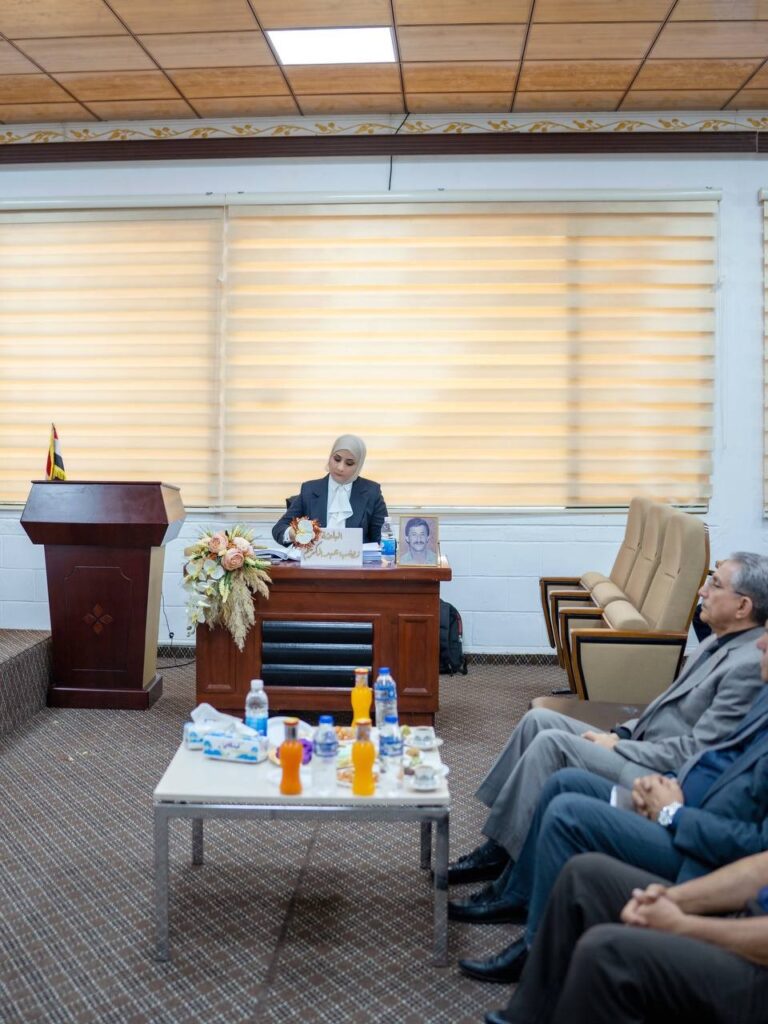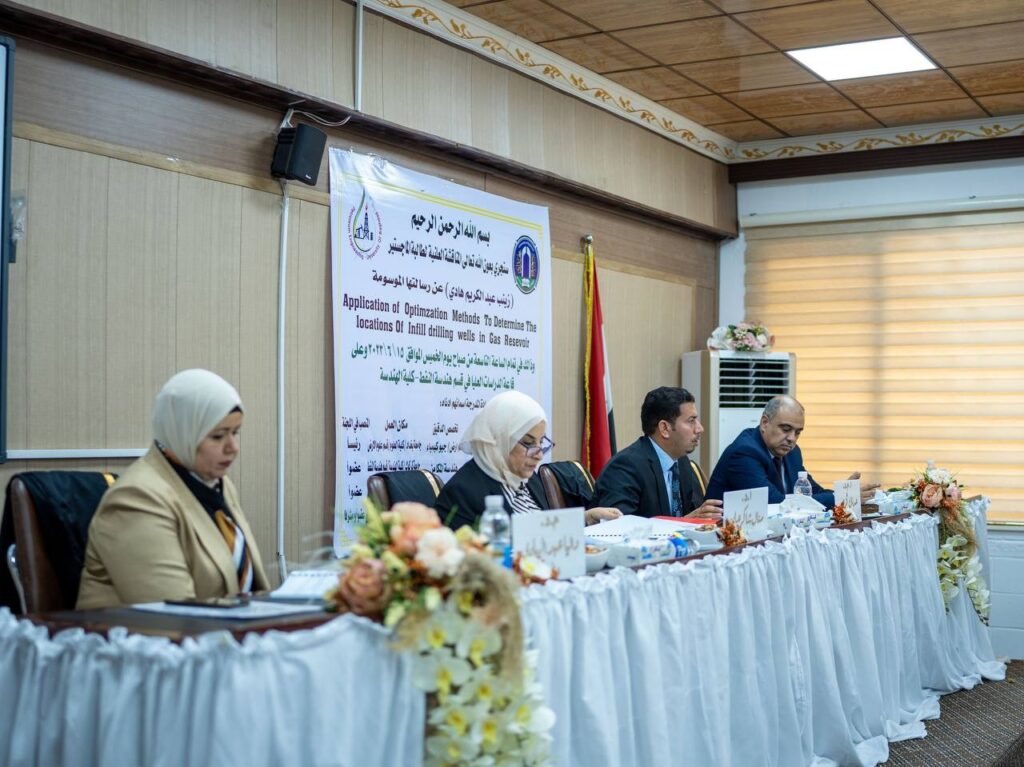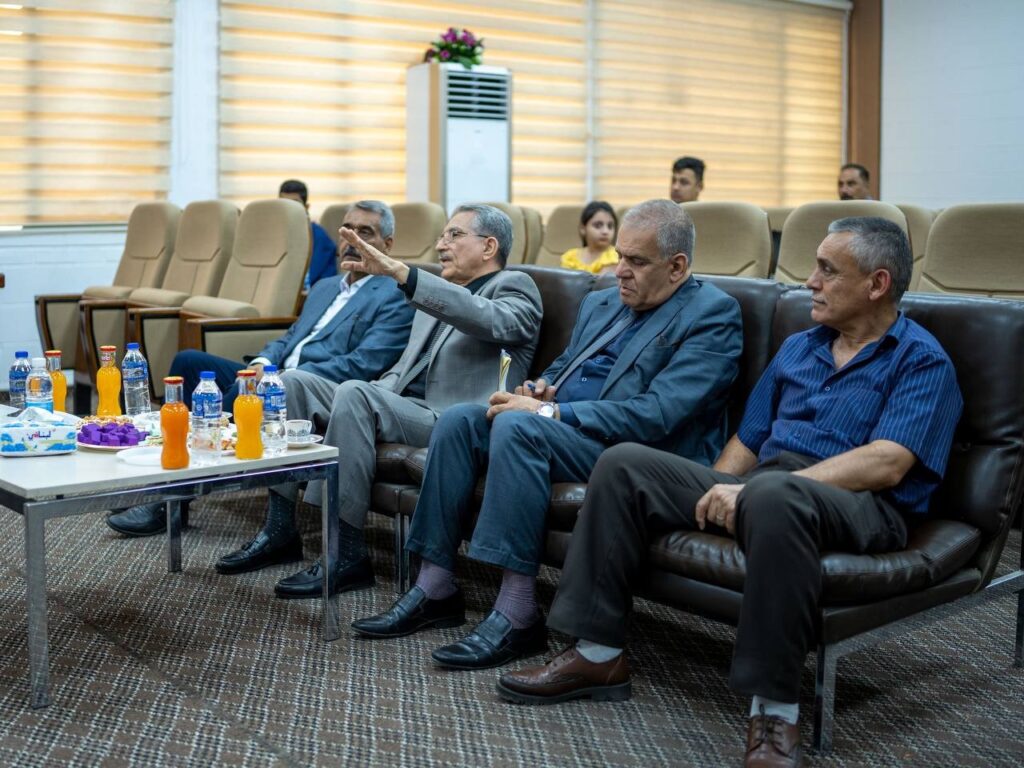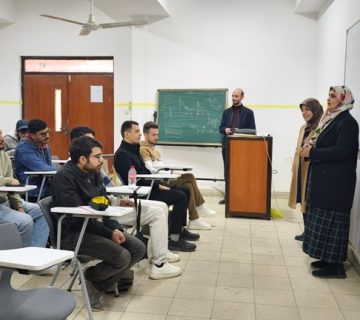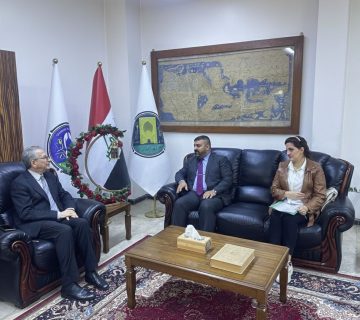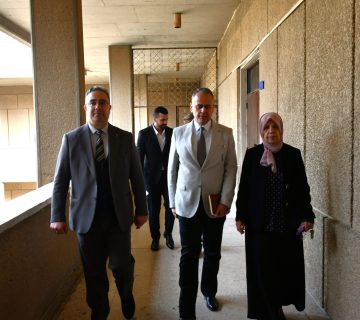A Thesis discussion was held on Tuesday 15-6-2023 in Petroleum Engineering Hall. This thesis was presented by student (Zainab Abdulkareem Hadi) and titled as: Application of Optimization Methods to Determine the Location of Infill Drilling Wells in Yamama Reservoir /Siba Field After discussing the student, listening to his defense, and evaluating the level of the thesis, the student was granted a master’s degree in Petroleum Engineering . With Excellent Degree.
The discussion committee was consisted by the following:
Prof. Dr. Manal Shakir Ali (University of Baghdad / College of Science – Department of Earth Science) _(Chairman)
Asst. Prof. Dr. Adnan Ajam Abd / University of Kirkuk / College of Engineering – Department of Petroleum Engineering– (Member)
Lecturer.Dr. Dalia Abdel-Hadi / University of Baghdad / College of Engineering – Department of Petroleum Engineering— (Member)
Asst.Prof.Dr. Omar Faleh Hassan – University of Baghdad / College of Engineering – Department of Petroleum Engineering ___(Supervisor)
The Thesis Abstract as : –
The Yamama Formation is a significant reservoir of hydrocarbons located in the Siba field, southern Iraq. To evaluate the petrophysical characteristics of this formation, a comprehensive study has been conducted that has been divided into two parts. In the first part, the logs of selected wells were evaluated using the Interactive Petrophysics software V4.4 to identify the petrophysical characteristics of the YC unit. The formation’s lithology and mineralogy were determined using various cross plots, including the M-N and N-D plots. These plots reveal that the YC formation mainly consists of limestone with low levels of shale, high porosity, and low water saturation. In addition, the fluid type in the Yamama (YC) reservoir was distinguished using gas analysis, and it was concluded that the type of hydrocarbon discovered is oil. Moreover, a static model was created to establish a representative static model as a necessary condition for the dynamic modeling phase.
In the second part of the study, optimization techniques were employed to maximize the net present value of investments in oil field developments by optimizing well placement. Intuitive well location design has several limitations, and to overcome these limitations, the study used the simplex nonlinear method as an optimization methodology, incorporating Net Present Value (NPV), cumulative oil output, and other limitations into the optimization. The results of the study show a Net Present Value of $267,871.59, a Recovery Factor of 4.47%, and a 25% incremental oil recovery. The study provides valuable insights into the petrophysical characteristics of the Yamama Formation in the Siba field and contributes to the development of optimized well placement strategies that can guide future development decisions.
Overall, this study highlights the importance of optimization techniques in maximizing the net present value of investments in oil field developments. It provides a comprehensive analysis of the petrophysical characteristics of the Yamama Formation in the Siba field and can help guide future decision-making processes in the oil and gas industry, especially in the development of optimized well placement strategies. This study is significant as it provides a better understanding of the petrophysical characteristics of the reservoir, which can help in the efficient development and management of oil and gas resources.
Objectives of the Study
- Identification of reservoir fluid: The study aims to identify the type and properties of the fluid present in the reservoir. Understanding the reservoir fluid composition is crucial for accurate reservoir modeling and prediction of production behavior.
- Determination of optimal infill well locations: One of the primary objectives of the study is to identify the best locations for infill wells within the reservoir.
- Analyzing reservoir regions with the highest oil saturation and permeability to maximize cumulative oil production and net present value (NPV). By strategically placing infill wells.
- In addition, Simplex nonlinear was used to tackle the well placement optimization (WPO) problem.


